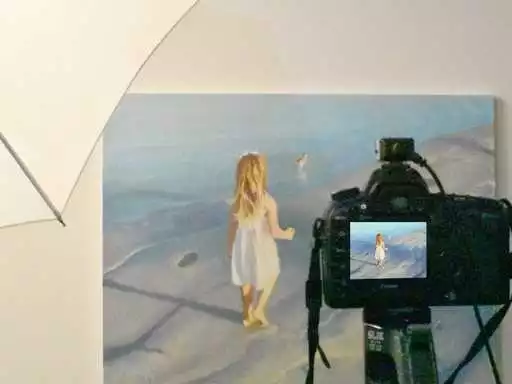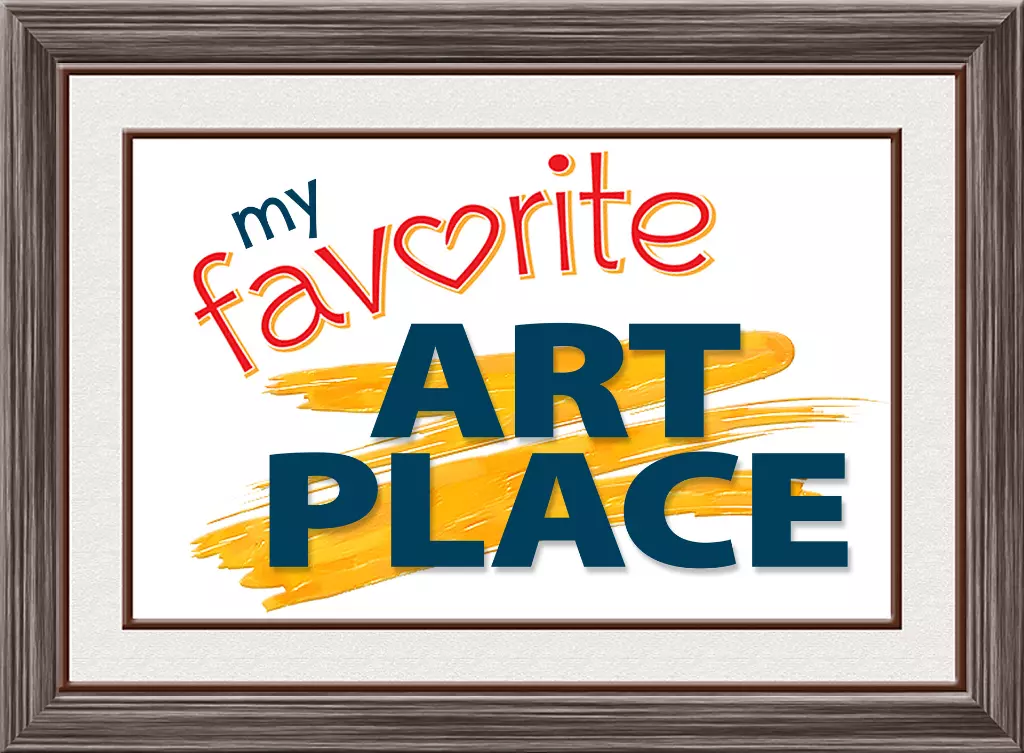Digital Capture Services

Price for Digital Captures
$65 for art up to 3’x4′; $85 for art larger than 3’x4′
The first step in the process of fine art reproduction is to evaluate the original for the best possible method of digital image capture. We find that most often, it is a high resolution photographic digital capture that is required. Our method does not touch, squish or press the piece, unlike scanners or other capturing methods. This is especially important for fragile, textured or framed pieces.
What can we expect regarding color matching?
Most of the time we get very close in color. Some shades of color are more challenging than others since paint and printing inks are very different and reflect light very differently.
Color matching is an art rather than a science with numerous variables. What is good or acceptable color reproduction is a subjective evaluation. In fact, different people perceive color differently. We take the time and effort to deliver a reproduction that most people agree is an excellent color reproduction.
What colors are the most challenging to match?
Certain colors of paint are “out of gamut” of the printing inks, meaning that they just can’t be reproduced perfectly by today’s printing inks. Our printer uses eleven ink colors and does a better job of color reproduction than other printers in the marketplace. Other printers may have only four or six colors.
Metallic colors (silver/gold) often look flat when reproduced since the original is viewed with slight movement of the painting or movement of the viewer which cause the metallic colors to glisten.
How does daylight vs. indoor lighting affect color?
Daylight is full spectrum (all colors). Indoor lighting (tungsten, fluorescent, halogen) do not contain all the colors and can cause the original and the print to appear differently under different lighting.
When a painting has varnish on it – how does that affect the digital capture and reproduction of art? When the art is very shiny and has texture, there can be problems with specular highlights (shiny reflections). We have techniques for compensating for this that take additional time. If possible, we prefer to photograph the painting before it is varnished.
What is the effect of texture on a painting or photograph to the process of digital capture?
Deep texture in a painting can be lost with flat even lighting (which is preferable in most cases). If we want to capture the effect of deep texture where shadows appear below the thick paint, we will adjust our lighting to be from above and more directional.
Texture in photographs will appear in the reproduction. In enlargements, the texture will be more prominent the larger the reproduction. The texture in large enlargements may become undesirable. This should be taken into account when deciding how large to make a print.
What is considered a “larger piece” and how is it different capturing
a larger piece – e.g. 3ft x 4ft. Larger pieces than 3 ft x 4 ft may require more lights. Instead of two lights, we go to four or more lights so that we get even lighting across the piece. This takes more time to set up requiring the use of a light meter and moving the lights until it is even across the piece. Depending upon the size, we may charge more for oversized digital captures (complex capture: see below).
What is the difference between exact color matching and reasonable color matching?
One can make a large number of successive color adjustments and proofs consuming much time, paper and ink to attempt exact color matching. Truth be told – some colors just can not be reproduced. There reaches a point where the color is close enough and most people agree that it is an excellent reproduction. This is the point that we call reasonable color matching.
Why do you charge to copy files to a USB thumb drive?
We provide three different files: large, medium and web sized. We name the files with the name of the piece. If we email them to you – then there is no charge. If you bring us your USB drive – there is no charge. If we give you a USB drive we paid for – we will charge you.
What size files should I have?
We provide a full resolution file produced by the camera or scanner for full-sized giclee reproduction, a print file for magazine or print production and a web sized file for websites or emailing. We can provide other sized files as requested to meet the specific requirements of juried shows or other uses.
What if I need retouching / cleanup of a digital capture?
There are a variety of techniques and tools to clean up an image, including: image cloning, spotting, digital painting, color enhancement, color adjustment, brightness/contrast, color painting, etc.
Once we see the original, we can estimate how long it will take to clean up an image and see to what degree the client wants it restored. Many times a client will ask us to spend a certain number of hours and then evaluate the image to see if more enhancement is desired.
Do I have to pay for proofs and if so, why do I have to pay for proofs?
Proofs take time and material to create. Not everyone wants a proof, so we keep our price for digital capture lower by not including the cost of a proof with the digital capture.
What size file can be delivered?
If a larger reproduction is required, let us know up front as we will photograph the artwork in sections and the pieces can be seamlessly stitched together resulting in much larger files. The size of the file depends upon the size of the sections captured and stitched.
File Sizes
We save files in three different sizes:
Big – full-size capture saved as in jpeg and tiff formats
Medium – 6” on the longest side @ 300 dpi saved jpeg format
Web – 1000px on longest side @72 dpi saved in jpeg format
Can I supply you my digital file?
Yes – you have the option of supplying us with a digital file, the original work or a transparency of the original piece. Client supplied, high-resolution, digital files of the work may be subject to an additional “proofing” charge if you want us to color match it with the original. If we do not create the initial digital capture, we must charge to create a color proof. The charge is $15 a test proof. This
Do you Color Calibrate with Artists / Photographers?
Yes we do. We appreciate when any artist is willing to go through the very simple process of color calibrating with our system – as that streamlines our ability to reproduce your work quickly. Just ask us and we’ll explain the process.

